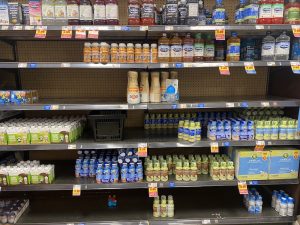$44 billion. That’s how much Americans will spend on pizza in 2017, according to the PMQ Pizza Magazine’s 2017 Pizza Power Report. It is greater than the combined budgets of the legislative and judicial branches of the U.S. government, NASA, the Environmental Protection Agency and the National Science Foundation.
Just about every community in America has a pizza restaurant, which means there’s a vast pizza economy to report on. Here’s how to slice the pizza pie in a way that will appeal to local readers.
Delivery drivers
According to Domino’s, the busiest days for pizza delivery are (in descending order), New Year’s Eve, New Year’s Day, Super Bowl Sunday, the day before Thanksgiving and Halloween. On Super Bowl Sunday, Domino’s drivers log almost 4 million miles. Business reporters can try to embed with a delivery driver on one of those days—harrowing stories need to be told.
Business models
A Pizza Hut franchise has a different business model than a sit-down upscale pizza restaurant, which has a different model than a family-run counter joint that’s been serving slices for 35 years. And none of them compare to something like a Chuck E. Cheese’s entertainment center. Is there a reason a particular type of restaurant is located in a particular neighborhood? Which business model is most profitable in your community? Are similar style establishments clustered close together?
Boxes & ancillaries
Pizza leaving the restaurant needs a transport device. That’s where the cardboard box comes in. According to pizza.com, the average pizzeria uses 55 boxes a day. You can drill into pizzeria economics by investigating how much of each order goes to paying for the box. Or the little plastic tripod that keeps the top of the box from sagging down onto the pie. What other ancillary expenses—like the packets of crushed red pepper and parmesan that you might not use—go into your pizza? Are they used more by the big national chains (which benefit from economies of scale) or mom-and-pop indie stores?
Piece or the pie?
A 19-inch pepperoni and sausage pizza at one restaurant in Phoenix costs $20 (including tax) and is served in eight slices; that works out to $2.50 per slice. But sold separately, those slices are $3.25 apiece—and chances are they’ve been sitting under a heat lamp for a while. Where does a pizzeria’s profit come from, slices or whole pies? If a restaurant chooses only to serve whole pies, what is their reasoning?
Topping culture
Pizza is all about toppings, and they play a big role in a restaurant’s bottom line. Anchovies might sit in a fridge for months, while pepperoni and sausage might only last a few hours. Some restaurants distinguish themselves based on toppings. Grimaldi’s, a New York style pizza restaurant chain based in Scottsdale, Ariz., for example, doesn’t serve pineapples. They claim that authentic New York pizzerias don’t do tropical fruit.
Delivery fees
Delivery fees don’t usually go to the delivery driver. But that doesn’t mean most customers add a tip. Companies argue that the fees go to reimburse drivers for wear and tear on their cars, but it might be worth asking drivers how they view that system. Would earning more tips outweigh the cost of vehicle upkeep? Drivers, if asked for their honest opinion, are probably very insightful.










